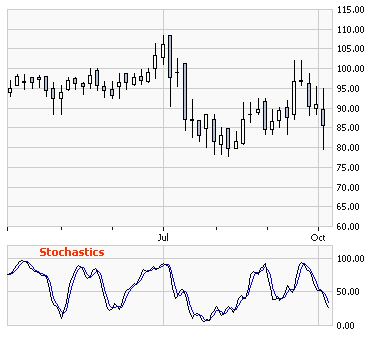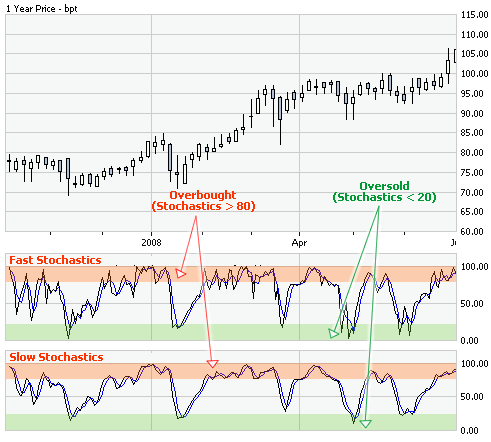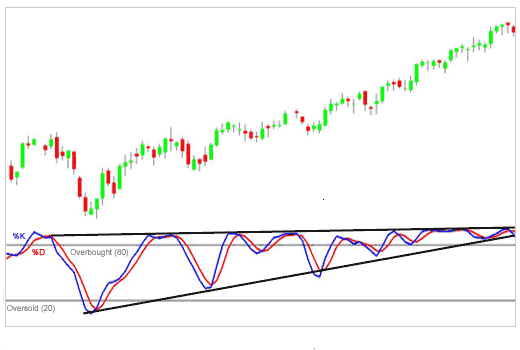Stochastics

The technical indicator called Stochastics is used to determine patterns of uptrends and downtrends in a stock’s trading pattern. The oscillation of the Stochastics shows you when a stock is nearing or within an oversold area or nearing or within an overbought area.
Stochastics come in two main varieties, fast and slow. Both are graphed between 0-100, where over 80 means overbought and under 20 means oversold.

Stochastics Fast
The Stochastic Fast is charted using the following two lines.
Fast %K: [(Close – Low) / (High – Low)] x 100 (shown as black line above)
Fast %D: Simple moving average of Fast K (3-day MA) (shown as blue “trigger line” above)
Stochastics Slow
The Stochastic Slow is charted using the following two lines.
Slow %K: Equal to Fast %D (3-day MA of Fast %K) (shown as black line above)
Slow %D: Simple moving average of Slow %K (shown as blue “trigger line” above)
Which is better? Well, the Stochastics Slow is usually preferred by most traders because is does not show as many false buy and sell signals.
Stochastic Price Divergences
One other aspect of Stochastics that I would like to touch on are Stochastic Price Divergences. This occurs when the Stochastics begins to oscillate within a smaller and smaller range. If the narrowing range is encompassing high numbers around 70 and above then this is a very strong bullish signal. The opposite is also true, if the narrowing range is encompassing low numbers below 30 then this is a very bearish signal.
Below is an example of a bullish Stochastic Price Divergence.
